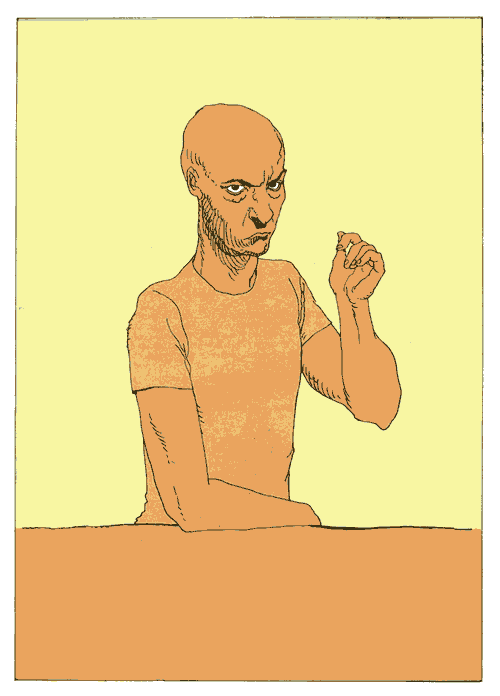
Reich was influenced by fellow minimalist Terry Riley, whose work In C combines simple musical patterns, offset in time, to create a slowly shifting, cohesive whole. Reich adopted this approach to compose his first major work, It's Gonna Rain. Composed in 1965, the piece used a fragment of a sermon about the end of the world given by a black Pentecostal street-preacher known as Brother Walter. Reich built on his early tape work, transferring the last three words of the fragment, "it's gonna rain!", to multiple tape loops which gradually move out of phase with one another.
The 13-minute "Come Out" (1966) uses similarly manipulated recordings of a single spoken line given by Daniel Hamm, one of the falsely accused Harlem Six, who was severely injured by police. The survivor, who had been beaten, punctured a bruise on his own body to convince police about his beating. The spoken line includes the phrase "to let the bruise’s blood come out to show them." Reich rerecorded the fragment "come out to show them" on two channels, which are initially played in unison. They quickly slip out of sync; gradually the discrepancy widens and becomes a reverberation. The two voices then split into four, looped continuously, then eight, and continues splitting until the actual words are unintelligible, leaving the listener with only the speech's rhythmic and tonal patterns.
Reich's first attempt at translating this phasing technique from recorded tape to live performance was the 1967 Piano Phase, for two pianos. In Piano Phase the performers repeat a rapid twelve-note melodic figure, initially in unison. As one player keeps tempo with robotic precision, the other speeds up very slightly until the two parts line up again, but one sixteenth note apart. The second player then resumes the previous tempo. This cycle of speeding up and then locking in continues throughout the piece; the cycle comes full circle three times, the second and third cycles using shorter versions of the initial figure. Violin Phase, also written in 1967, is built on these same lines. Piano Phase and Violin Phase both premiered in a series of concerts given in New York art galleries.
Reich also tried to create the phasing effect in a piece "that would need no instrument beyond the human body". He found that the idea of phasing was inappropriate for the simple ways he was experimenting to make sound. Instead, he composed Clapping Music (1972), in which the players do not phase in and out with each other, but instead one performer keeps one line of a 12-quaver-long (12-eighth-note-long) phrase and the other performer shifts by one quaver beat every 12 bars, until both performers are back in unison 144 bars later.
Early Works: Come Out - 1966 / Piano Phase - 1967 / Clapping Music - 1972 / It's Gonna Rain - 1965
DownloadWatch Steve Reich: A New Musical Language (documentary, 1987)













